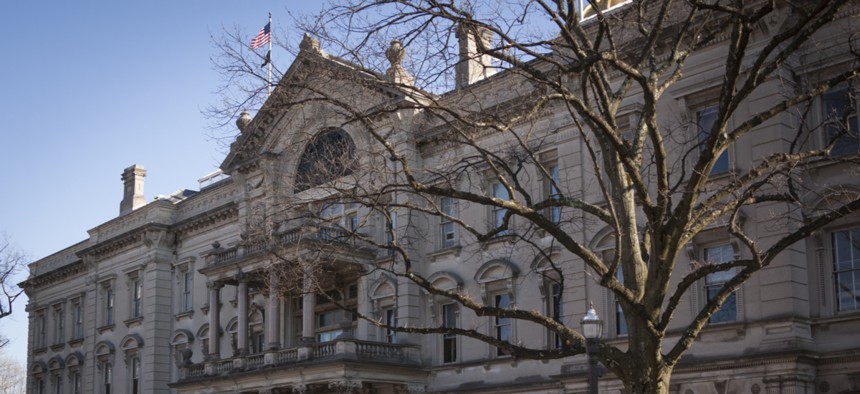New Jersey’s Smallest Lame-Duck Loser—An Official State Microbe

The New Jersey State House in Trenton. Shutterstock
Even though a legislative proposal lost out in Trenton, this bacterium helped win a Nobel Prize and cure a global disease.
The final state legislative session under Chris Christie’s governorship in New Jersey has come to an end. Now that it’s over, it’s time to talk about what was, perhaps, the smallest loser in the lawmaking process—Streptomuces giseus.
A bill that would have designated Streptomyces giseus the “New Jersey State Microbe” passed the Senate, but languished in the Assembly on Monday evening.
If you’re wondering why a state legislative body would ever choose to honor a humble bacterium, consider the story of how that microbe aided in the treatment of a major global disease and helped to establish the Garden State as a pharmaceutical power player.
S. griseus was first discovered in New Jersey soil by Dr. Selman Waksman, a professor of biochemistry and microbiology at Rutgers University, in 1916. Waksman was such a pioneer in the world of modern antibiotics that he is actually credited with coining the term “antibiotic.”
In 1943, Waksman and Dr. Albert Schatz, a Rutgers graduate student, isolated streptomycin from the microbe. There’s some controversy over which of the two men deserves the full credit for the discovery, but the disputed origin story does little diminish the impact of this scientific breakthrough.
Streptomycin turned out to be the world’s first antibiotic effective in treating tuberculosis, which at the time of the drug’s discovery was one of the leading causes of death in the United States. Waksman went on to receive the Nobel Prize for Medicine in 1952 for his work on streptomycin. And, although Waksman owned the patent and license to the antibiotic, rather than keep the money the drug generated, he donated 80 percent of the royalty earnings to Rutgers. That donation which enabled the creation of the Waksman Institute of Microbiology, an influential program that continues to carry out research on molecular biology and biochemistry.
Oregon is the only other state that has officially recognized the major contributions of a microbe—in the Beaver State’s case, Saccharomyces cerevisiae, a brewer’s yeast. In 2010, Wisconsin nearly designated a state bacteria, giving credit to Lactococcus lactis, a critical microbe in the production of cheddar cheese.
In 2013, lawmakers in Hawaii attempted to designate a strain of bacteria, Flavobacterium akiainvivens—which is was found by a local high school student and is found on a shrub used by ancient Hawaiians for medicine and textiles—as an official symbol of the Aloha State.
“At first glance I said, ‘You’ve gotta be kidding me,’” State Rep. James Tokioka, the member who introduced the “official microbe” bill told Hana Hou!, the magazine of Hawaiian Airlines at the time. “But the more I read about it, I realized it’s not silly. We talk about promoting science, and this serves as an excellent opportunity to do that.”
Sadly for F. akiainvivens, the bill was apparently met with “overwhelming apathy” in the Hawaiian Senate.
And, if you still think it’s ridiculous for state lawmakers to name an official bacterium, consider the fact that the official state sport of Maryland is jousting, the official state snack for Utah is Kraft’s Jell-O, and the state toy of Pennsylvania was very nearly the Slinky.
Quinn Libson is a Staff Correspondent for Government Executive’s Route Fifty and is based in Washington, D.C.
NEXT STORY: America's Rural Hospitals Are Dangerously Fragile






